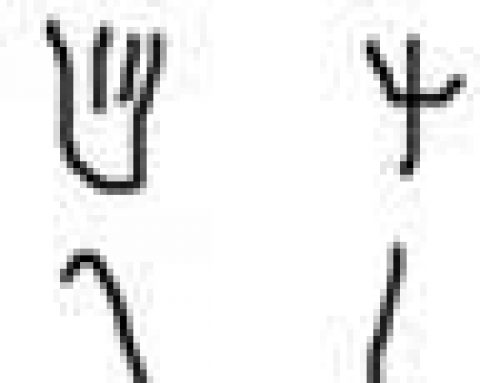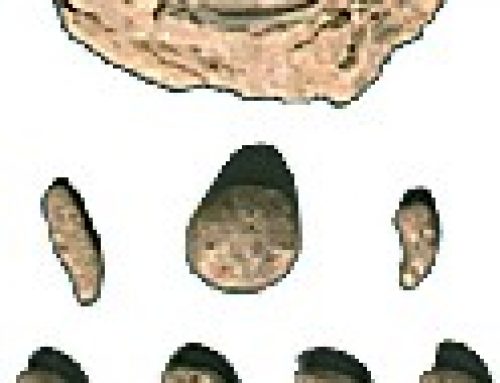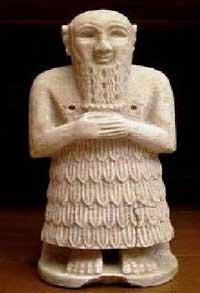
Tel Asmar, ca. 3000 BC
Most likely people were already wearing clothing about 60,000 years ago when they first walked or sailed out of Africa to West Asia. Clothing must have been invented about this time because genetic mutations show that’s about how long ago body lice evolved from head lice, and body lice can only live on clothing. This early clothing was probably furs and leathermade from animal skins, like this man wearing a sheepskin skirt.
Sometime around 5,000 BC, people in West Asia began wearing clothes made by spinning and weaving cloth and sewing the cloth with bone needles. Probably sewing with needles came to West Asia from further north in Central Asia, where colder weather made people more interested in clothing. But the earliest evidence of weaving comes from Turkey, in West Asia, and maybe West Asian people invented weaving.
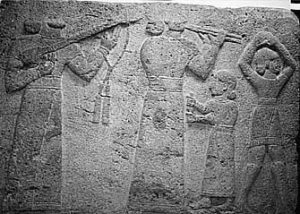
Hittite musicians in long and short tunics (1500 BC, modern Turkey)
In West Asia as in Central Asia, people soon began to use clothing to tell what group of people you belonged to. Because of the many different cultures which came into contact with each other in West Asia, clothing became very important as a way to tell to which group of people a stranger belonged. So there was no one West Asian way to dress. Instead, there were many many different ways, and all of the differences were very important to people, because they helped people know who you were.
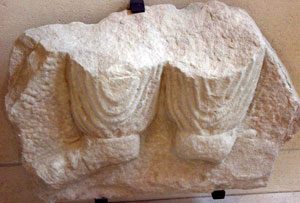
Pants on a Parthian man (Iran, about 100 AD)
In the summer, it is very hot in West Asia, and so most of the outfits are loose-fitting and have a lot of cloth in them, to cover your skin so you won’t get a sunburn in the hot sun. Both men and women usually wore a woolor linen tunic. Often there was another long piece of cloth which you wore over your head, which we call a veil for women and a turban for men. West Asian men got women to wear veils by making a law that enslaved women couldn’t wear veils – then all the free women started wearing veils, so people wouldn’t mistake them for slaves.
When men were working hard outside, or when they were fighting a war, they often just wound a smaller piece of cloth around their stomach and legs to make something like a pair of shorts. But women always covered themselves from their neck to their knees at least, even when they were working in the fields.
When Indo-European people like the Medes and the Persians and the Parthians moved south into West Asia from Central Asia, they brought with them the Central Asian custom of wearing pants, which went with the importance of riding horses in that part of the world. Persian men and women both often wore pants under their tunics, even hundreds of years after moving south into West Asia.
Learn by doing: West Asian costumes
Medieval Islamic clothing
Bibliography and further reading about West Asian clothing:
Ancient Egyptian, Mesopotamian & Persian Costume, by Mary G. Houston (reprinted from 1954 edition). For professional costumers, with patterns.
Women’s Work: The First 20,000 Years : Women, Cloth, and Society in Early Times, by Elizabeth Wayland Barber (1995). Not for kids, but an interested high schooler could read it. Fascinating ideas about the way people made cloth in ancient times, and why it was that way.

